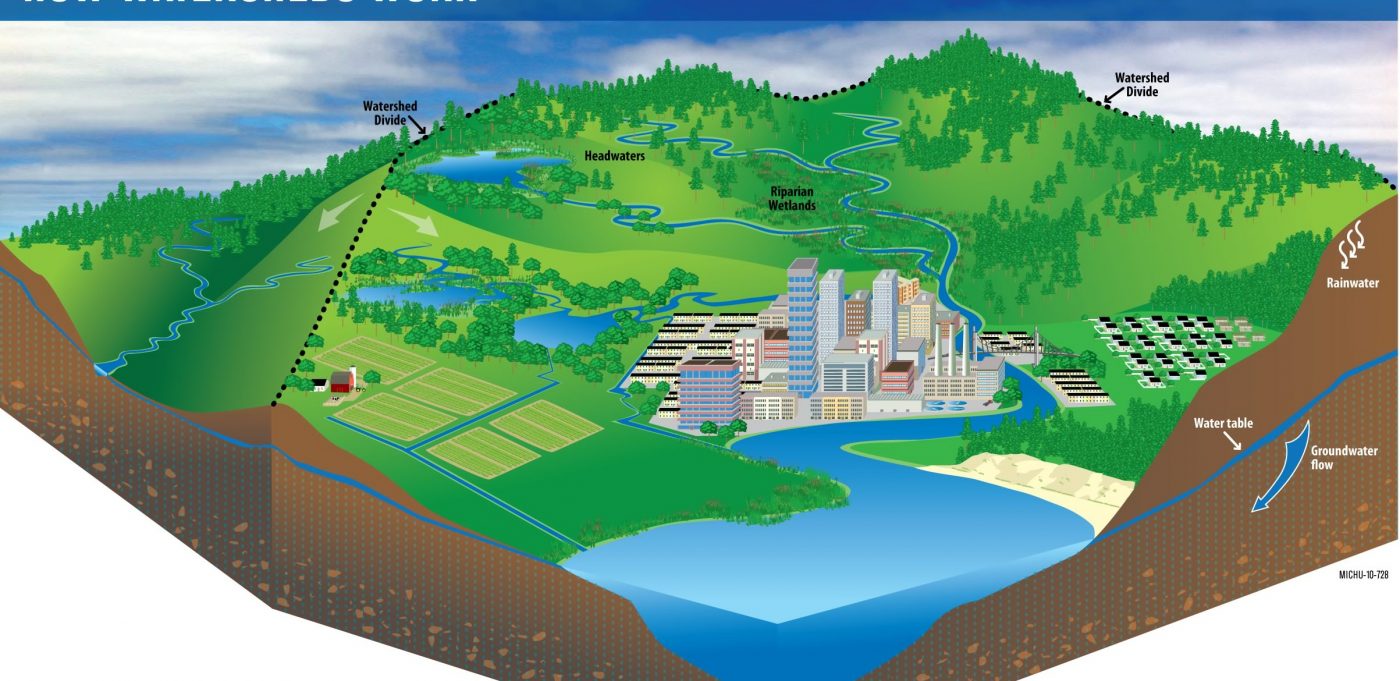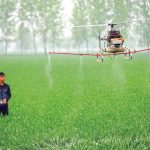DR SACHIN TENDULKAR
The participation of local authorities and village communities is necessary to achieve self sufficiency and sustainability of water availability in the village. The focus of government on providing 24×7 water for drinking does not augur well with sustainability of this important resource. The concept of Watershed Development is based on participatory treatment of watershed area.
Goa annually receives an average of 3500 mm of rainfall through south-west monsoon between June to September. The rainfall is even higher in talukas bordering foothills of Western Ghats. Despite heavy rainfall, many parts of Goa experience water shortage during summer season. There are various reasons that can be attributed to this shortage. Overall change in land use in catchment area, destruction of catchment for different developmental activities, removal of indigenous trees and replacing them with exotic trees, lesser recharge of rain water into soil, increased extraction of surface and sub surface water for domestic and industrial use are many of the reasons. Government has initiated many measures to augment the supply of water for drinking and irrigation through construction of numerous bandharas, major and minor irrigation projects, interlinking of rivers etc. These are tail end solutions to increase the availability of water. However, the major intervention required, is to ensure higher recharge of rain water into soil in catchment areas of major rivers. We should be adopting principal of catch water where it falls. This will reduce the surface runoff of water and ensure that the water seeping into soil is converted into sub surface flow. The undulating topography of the state and steep slope bordering foot hills in certain talukas of Goa demand that we initiate more efforts to ensure higher recharge of the rain water in these areas. With 33 percent of the state area under forest, adopting these measures in forest areas can be a boon to state rivers besides generating employment opportunities.
The catchment of each river is made up of smaller identifiable hydro-geological unit called micro-watershed. The entire area contributing to the surface run-off from the rainfall to a particular outlet is known as catchment or watershed of that particular discharge point. Ideally, the size of micro-watershed varies between 500 to 1000 ha. The state has been divided into more than 450 odd micro-watersheds, of which, 52 micro-watersheds have been treated with people’s participation. The cumulative discharge of each of these micro-watersheds contributes to the flow of river. It is essential that there is maximum harvesting and recharge of rain water in these micro-watersheds in order to retain a healthy flow of water into the river in summer season to support flora, fauna and the entire ecosystem. This is achieved through various physical and biological interventions in catchment area of each micro-watershed. The main aim of Sustainable Watershed Development is to achieve soil and water conservation within the catchment.
The participation of local authorities and village communities is necessary to achieve self sufficiency and sustainability of water availability in the village. The focus of government on providing 24×7 water for drinking does not augur well with sustainability of this important resource. The concept of Watershed Development is based on participatory treatment of watershed area. Participatory Watershed Development has been undertaken by Goa government through Directorate of Agriculture and Rural Development Agency since 8th Five Year Plan. Many of these projects were assigned to non-profit organisations as project implementing agencies in later years. Goa Shipyard Limited is supporting one such project in Adne – Balli Village of Quepem taluka as part of their Corporate Social Responsibility since 2012. The project is executed by Mineral Foundation of Goa, Panaji and promotes participatory soil and water conservation activities by providing livelihood opportunities to the local community.
Participatory Watershed Development can also be supported liberally through Mahatma Gandhi National Rural Employment Guarantee Scheme which has been demonstrated in other Indian states. The biological interventions in Watershed Development include planting of cover crop, native trees and shrubs, maintaining vegetation along the course of nullahs and streams, live fencing etc. The physical intervention includes digging of staggered trenches across slope, digging of sunken ponds at gully head, construction of gully plugs, loose boulder check dams, gabions, open type bandharas etc. The cumulative effect of these measures results in reduced erosion of top soil, higher recharge of rain water in higher areas and increased sub surface flow in streams and nullahs.
Many hillocks in interior areas of Goa have seen huge plantation of cashew crop by clearing native vegetation. The native vegetation provided soil cover and prevented erosion of top soil which is altered in clean cultivation system for cashew. To prevent soil erosion and aid more recharge of rain water into the soil in cashew groves, it is necessary to dig trenches across the slope. These trenches are of dimensions 1.5 metre in length, 0.5 metre in width and 0.5 metre in depth. The zigzag arrangement of these trenches across the slope corresponding to three points of triangle ensures that the surface rain water laden with fertile top soil running down the slope is intercepted at regular intervals. This rain water recharge on hill slopes also retains fertile soil within the cashew plantation, and extended moisture regime increases productivity of cashew crop by around 10%.
Participatory Watershed Development Projects are executed with wide ranging goals. This approach promotes soil and water conservation through participatory approach, and provides livelihood opportunities to local community in the village itself and reduces seasonal migration. It also helps to increase biomass and enhance Carbon Sequestration potential of watershed area. It helps to promote suitable microclimate for flora and fauna. It reduces the surface runoff of rain water and increase the ground water recharge. It increases the time of concentration in watershed area and directly helps in flood mitigation measures. It increases the base flow in streams and rivulets during lean season to support ecosystem services. It reduces the sediment load in water bodies and reduces the flooding. It helps to create awareness amongst the villagers about dangers of forest degradation and associated climate change. It promotes renewable energy resources like solar energy, biogas and achieve efficient use of fuel-wood.
Presently, the Watershed Development project, financially supported by Goa Shipyard Limited and executed by Mineral Foundation of Goa, is bringing about change in Adne-Balli Village of Quepem Taluka. Started in 2012, the project has made considerable progress towards achieving the set out goals. Around 178 ladies from 13 self-help groups have joined together to register Somnath Panlot Sangh. The different capacity building programmes conducted till date has increased awareness level of community about the dangers of desertification and water shortage. They have also understood the importance of conservation of top soil and the need to artificially improve the ground water recharge and increase the base flow of stream in lean season. Awareness about biogas, solar cooker, solar lantern and energy efficient gadgets and their partial adoption has freed the women of drudgery of smoky areas and other health problems. Promotion of biomass through live fencing of Gliricidia spp. has helped in arresting erosion, providing green manure, fixing nitrogen in soil and cutting down on requirement of nitrogenous fertilizer. Microcredit and linkage with agriculture department through this project has helped people in adopting vermicompost technology and biogas system reducing the generation of biogas and better utilization of its potential. Digging of trenches, sunken ponds, gully plugs, loose boulders, gabions have arrested the flow of top soil and organic matter which otherwise would have landed in nullahs or streams and would have led to flood and also anaerobic decomposition of organic matter thus releasing greenhouse gases. Participation of large number of ladies in this programme has helped in taking the message of environment conservation to every household and built the ownership of conservation practices amongst the villagers. Increased use of green manure and vermicompost has reduced the use of chemical fertilizers and resulting environmental pollution due to leaching. Increased recharge of ground water has extended the moisture regime and supported the local flora and fauna including birds, reptiles, amphibians, butterfly, insects etc. which are part of the food chain. The project has reached out to educational institutes in the local area to create awareness about the importance of this project. The project has improved the participation of the local community in conservation of soil and water resource which will play crucial role in future.
Till date, these ladies have dug 83500 trenches, 328 gully plugs, 158 loose boulder check dams, 12 gabions, 32 sunken ponds and 8680 running metres of live fencing. All these works have been done by using local people and there is no outside contractor involved. The project has generated livelihood opportunities for willing local people, developed sense of ownership about the assets created and empowered the local community socially, economically and environmentally. Besides soil and water conservation activities, the ladies have started cultivation of vegetables and selling it to Goa Horticulture Development Corporation. The members of Watershed Association have raised certain amount as corpus for future maintenance and activities, which has crossed Rs. 2 Lakh. A group has come together and availed solar fencing which will enable them to use the land more intensively. They have become aware about the different schemes of agriculture department. Till date Goa Shipyard Limited has spent Rs. 64.44 Lakh on this project. The project has generated water harvesting potential of 30,000 cu.m. This will ensure that 7.20 crore litres of rain water will be recharged every rainy season. This will also arrest the movement of top fertile soil.
The project has not disturbed any ecological balance and is the most environment friendly initiative. These days there is a problem of less water in rivers. This problem can be addressed if we take up this activity on mass scale in all the catchments of rivers in Goa. Along with bandhara, these initiatives need to be taken up if we want a minimal lean season flow in our nullahs and streams. The water level which is being monitored from summer of 2013 has started showing improvement and there is a documented rise of 15 centimetres in the project area during lean season. The project has involved use of only local materials like boulders and there is no use of concrete. 90 percent of the money spent has reached directly to beneficiaries through their respective accounts.
Besides adopting Watershed Development approach in villages, there is also a need to adopt water efficient techniques for cultivation, good agricultural practices to ensure higher productivity of crop with lesser usage of water and climate smart agriculture. In order to address the problem of dwindling water in the rivers there is a need to develop a holistic catchment management plan for entire Goa based on resilience approach involving different agencies having a stake in water. These include Water Resource Department, Public Works Department, Forest Department, Goa State Pollution Control Board, Command Area Development Agency, Agriculture Department, Electricity Department, Mines &Geology Department and Industries Department.



























